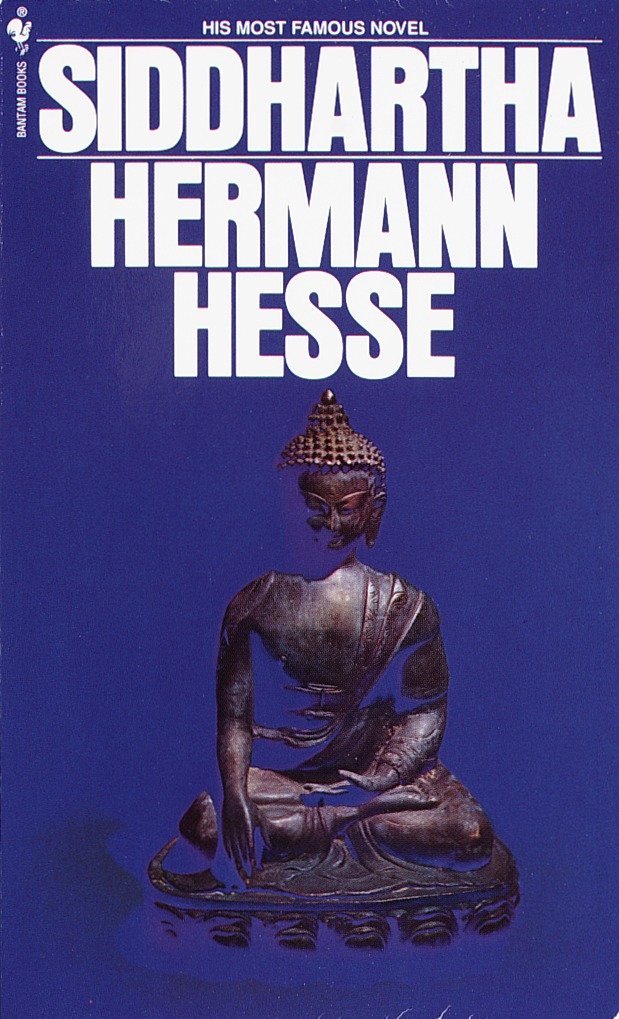Hermann Hesse, Siddhartha (1922)
There is much that is wrong with Siddhartha.
For one thing, it’s an orientalist fantasy of India written by someone who’d never been there. Siddhartha is a quintessential product of the German Oriental renaissance, which, free from the practical realities of colonialism, could maintain an Orient of the mind, an Orient of ancient texts. Siddhartha takes place not in any real India, but in the India of Shakuntala. And I know the dark turn this German Orientalism had already taken, casting the Aryans as the true founders of Western civilization, demoting the Greco-Roman and Semitic to mere sterile interlopers — and, with them, the Napoleonic French who had so recently humiliated them, and their language, which had taken over European intellectual discourse as the replacement for Latin. We all know where German Aryanism ended up, and though this can’t be blamed on Hermann Hesse in 1922, the Germanic presentation of haughtily pure and perfect brahmins can be a little discomfiting.
Siddhartha is also, like all of Hesse’s important works, an adolescent book, in that it elevates the very adolescent quest for independence and self-knowledge into the highest good over a lifetime. Such a quest is a common enough pursuit for young adults, in the West at least, but most of us make our peace with the inevitable ambiguities of life and shift our focus to other concerns: love, family, career, creativity. We may feel twinges of regret for lost idealism, but in Siddhartha, this comes to be seen as a full-blown betrayal, which is an appealing view if you’re still in the midst of your youthful discovery phase and sure — as young people tend to be — that you will never settle into the ordinariness of your fucking parents.
And there is the further irony in putting all this adolescent rebellion into an Indian setting. India, still in the twenty-first century a land of arranged marriages and caste-bound social lives, is less amenable to quests for personal independence than almost anywhere else. Reading V.S. Naipaul and others, one gets a sense of how embedded Indians are within complex networks of identity. Who you are is who you are among, and there is little notion of simply rejecting all of it and starting fresh as an individual. This is a German idea, not an Indian one.
When I first read Siddhartha in my senior year of high school, I knew very little about India and nothing about German orientalism. I did know that I was struggling to break free of my parents’ religiosity, just as Siddhartha struggled to break free from the empty ritual life of his father. Four years later, when the idea of traveling to India came to me in a half-sleep, surely Siddhartha was there in the background. I didn’t travel to India on a conscious spiritual quest. Like Siddhartha, I felt I’d already had enough of teachers, that I needed to discover the world on my own, which is why I spent no time in ashrams or monasteries during that trip.
But perhaps Hermann Hesse had something to do with my half-formed notion that wandering aimlessly around India was a way to break free from a prescribed and rote course of life. I went to India because it was easier than starting a career, and because I was terrified of starting a career, which I imagined would chain me to a desk for forty years with no summer vacations and no adventures. Just why I thought India was the right place to go is a question I’ve been pursuing, and Siddhartha is one of the points of direct contact I can identify between the cultural body of received ideas and my own young self.
I remember, back in high school, liking Siddhartha and then not liking it. I liked — loved — the part where Siddhartha rebels against his father and goes off to find himself. I waited for him to become the Buddha, so I was startled when the Buddha turns out to be someone else. And then I remember being disappointed when Siddhartha went to the city, fell in with a courtesan, and became a wealthy merchant. I was still too young to get it. When Siddhartha finally leaves that life for the simplicity of being a ferryman, and at last finds true enlightenment in his old age, I saw it as too little too late. Who wants to wait so long for enlightenment, or to suffer so much along the way?
What Siddhartha misses — what Siddhartha misses — is that the way to find meaning in ordinary life is through human connection. Siddhartha stays aloof. He enjoys his courtesan but doesn’t marry her. He never has a child (that he knows about). He’s generous in business, but he never sees his business dealings as important to the community. What most of us learn is that to know thyself, you have to know others. The unexamined life may not be worth living, but the life that is examined but not experienced is no life at all.
Young people just starting out in life don’t know all this. What I learned in India was, first, what it was like to be utterly alone, and second, how to connect with others. I didn’t quite learn how to take real life seriously — that would come later — but it was the beginning of my discovery that what’s outside is more interesting than what’s inside.
For all its flaws, Siddhartha had me on the edge of tears for much of the way through. It’s a beautiful fable, and one can recognize the absurdity of one’s adolescent self while still mourning the passing of that self and its passions. Maybe that’s what this whole project is, writing about that formative four months in South Asia. Maybe that’s what the bildungsroman is, and why they’re written by adults rather than children.

